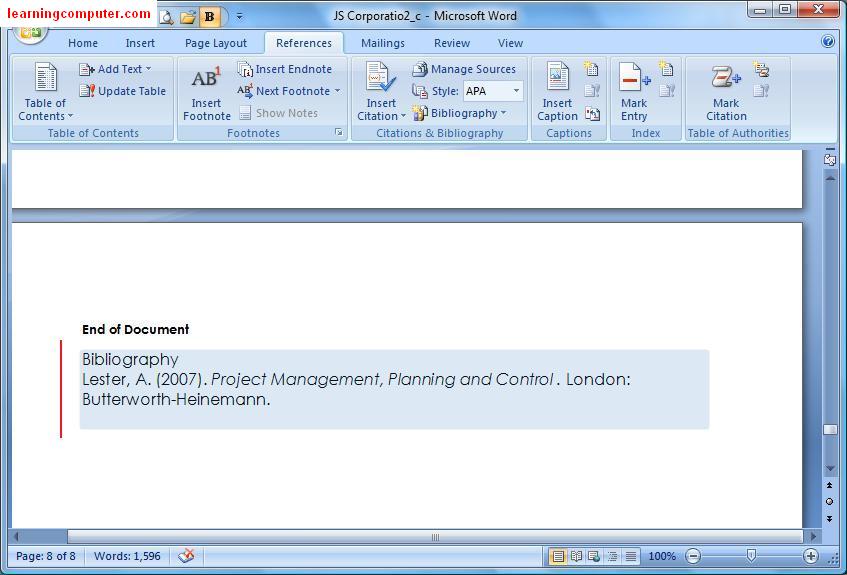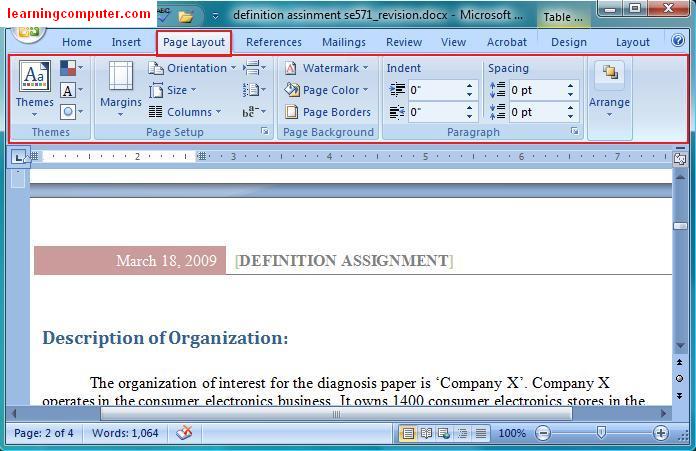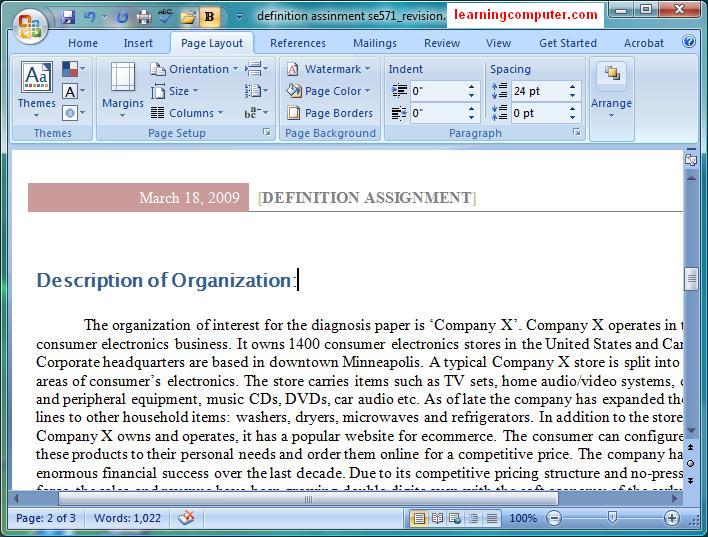Microsoft Word 2007 - Mailing Tab
Using the Mail Merge feature in Microsoft Word 2007, you can write a customized letter or flier to all your customers in one shot. Each letter has the same kind of information, yet the customer content is unique typically provided by a data source. The data source could be in many formats including text file, Microsoft Excel, Microsoft Access, SQL server 2008, Oracle, etc. Today we will look at the procedure of using mail merge in Microsoft Word 2007 with data from Microsoft Excel 2007. So let us go ahead and get started.
First of all browse to the Mailings Tab which can be found next to the Review Tab. When you click on it, you will see something similar to the screen shot below. In my case I have written a generic form letter that I will be sending to all of our customers. I've added my address information, the annual sale specifics and a few closing remarks. What I need to do is add unique customer information and a greeting line to the body of each letter.

Before I get started I also need the customer data from Microsoft Excel 2007. Right below is a screen shot of the data that I will be using for my mail merge example. Let us take a look at some of the mail merge fields; first name, last name, address information, etc. Also notice that the data resides in Sheet 1 of the Excel workbook.

Switch back to Microsoft Word. Go to the Start Mail Merge group under the Mailings Tab to start the mail merge process. Select Start Mail Merge command and then choose Step by Step Mail Merge Wizard. I would highly recommend using this option if you are new to mail merge. Here's what it looks like in my case.

This will launch the Mail Merge wizard which is a six step process. In the first step, you have to select what type of document will you be working with. I'm going to use the Letters option and then click Next. You can see the wizard on the right side of the document as shown below in the red rectangle.

In the next step you have to select which letter you will use for the mail merge. I'm just going to use my current letter that I started with and then click Next. There's a screen shot of what I'm talking about shown below.

In step three I have to select a data source for my customer list. For our demo, I am going to use a list from Microsoft Excel as was mentioned earlier. So I will choose Use an existing list and then click on Browse.

This will launch a new dialog box where I will find my customer data file in Documents folder. I will click on Customer Data.xlsx and then hit Open. This is shown in the figure below.

My customer data resides in Sheet 1$ so I will select that one and click OK. Also I will check First row of data check box. The dialog box shown below displays this information.

The mail merge wizard will parse the data, and bring up a list of all the possible mail merge recipients. In this list you can choose the customers that you would like to send the letter to. You can also sort and filter the data depending on your situation. I'm going to be using the default settings and just click OK.

When I did this, it took me back to my previous screen with one exception . Notice under the Use an existing list, you can see that it found Sheet1$ in Customer Data.xlsx. I will click on Next:Write your letter to move to the next step in the wizard.

In step four, I will be adding the address information and also a Greeting line block to my letter. Let us see how to do just that. In the screen shot below, I have highlighted in red were the address and greeting information needs to go. I'm going to select my insertion point in my letter (blue arrow) and then click on the Address block on the right side of my document.

This will bring up the Insert Address Block dialog box as shown below. In the Preview pane, I see that the actual street address is missing, not good. I need to fix this so I will click on Match fields command button.

This will take me to the Match fields dialog box where I can choose fields from the drop down for the place holders. I will select Street for Address 1 and then click OK. Here's a screen shot to display what I am talking about.

Notice that this inserted street address in the Preview pane. I can preview the information to make sure it looks good. Then I will click on OK.

In the screen shot below you will see that the wizard added an Address block in our document shown in a red rectangle. Next we need to add a greeting line, so I will choose Greeting line in the wizard on the right side and rerun my steps. This is highlighted by red rectangles in the figure below.

This will bring up the Greeting line dialog box. For the format I just need to use the first name, so I'll click on match feels again.

This will bring up the Insert Greeting line dialog box as shown below. I will go ahead and select the first name in the drop down and then click OK. You get the idea on how to customize the field selection and formatting within the mail merge wizard.

This time it added the greeting line to my letter. We still need to do one more thing before we can move onto the next step. We need to remove the Add address information and Add greeting line information that was part of the initial draft. So please go ahead and remove them. These are shown using a strikethrough below. Go ahead and click on Next to move on to Preview Letters.

Yahoo! we can actually see customer information and the greeting line in the next screen shot. This is exactly what we needed to achieve however font and showing up in red.

We must correct this before we can move on to the next step. I can just use the mini toolbar fix this problem. Here's what it looks like and then I clicked on Next: Complete the merge.

At this point we are done with our mail merge letter. You can either Print them or you can Edit individual letter. I will click on Edit individual letters to see what they look like.

This fires yet another dialog box with the heading on Merge to New Document. I will choose All for Merge records and hit OK as shown below.

I think we are all set at this point. If you look on the bottom left corner, you will notice that it is displaying Page 1 of the 100 letters that I need to send to my customers.

If you like this you can save this as a separate word document. This is shown in this screen shot below. I'm going to call this document customer mailings letters. Remember, you can always get back to these letters and print them at a later time if you like.
If you like you can Save this as a separate Word Document. This is shown in this screen shot below.

I'm going to call this document Customer Mailings Letters. Having a saved document is beneficial as you can always get back to these letters and print them at a later time if you like.

At this point we are done with our mail merge exercise. I did want to show you a few more features in the Mailings Tab so let us take a look at some of these quickly. Sometimes it is necessary to look at the fields (place holders) that you are using for mail merge in your document. You can highlight them by using Highlight Merge Fields command under the Write and Insert Fields Group. This is shown below in the screen shot.

What if you wanted to insert the last name in the greetings line? You can easily do this by selecting the Insert Merge Field command from the Write and Insert fields group. Here is what it looks like in action.

If you wanted to preview a certain customer, you can do this by using the Preview Results group. Let us say that we wanted to look at the tenth customer, we can easily use the navigation buttons to browse to that customer. This is shown in the figure below.































 Sign-up and Get Free $10
Sign-up and Get Free $10 Sign-Up and Get Free $10
Sign-Up and Get Free $10






















